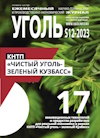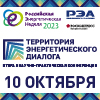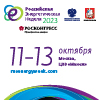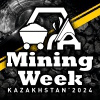
SOCIAL & ECONOMIC ACTIVITY
Original Paper
UDC 338.9:658.387.211 © E.A. Bazhutova, T.P. Skufina, 2023
ISSN 0041-5790 (Print) • ISSN 2412-8333 (Online) • Ugol’ – Russian Coal Journal, 2023, № 7, pp. 41-49
DOI: http://dx.doi.org/10.18796/0041-5790-2023-7-41-49
Title
REGIONAL, MUNICIPAL AND CORPORATE ASPECTS OF MANAGEMENT OF THE SHIFT MIGRATION IN THE REGIONS OF THE ARCTIC ZONE OF THE RUSSIAN FEDERATION
Authors
Bazhutova E.A.1, Skufina T.P.1
1Luzin Institute for Economic Problems of the North Federal Research Centre «Kola Science Centre of the Russian Academy of Sciences», Apatity, 184209, Russian Federation
Authors information
Bazhutova E.A., Researcher, e-mail: eabazhutova@mail.ru
Skufina T.P., Chief Researcher, e-mail: skufina@gmail.com
Abstract
The article presents an overview and analysis of modern mechanisms for managing rotational migration used at the federal, regional, municipal and corporate levels. The imbalance and inconsistency between the federal, regional, municipal and corporate levels of management of the processes of rotational migration is revealed, which does not contribute to the motivation for permanent life and work in the regions of the Russian Arctic and increases the outflow of the population from these regions. The directions of their mutual integration and improvement are determined on the basis of taking into account the opinion of shift workers, collected through a survey, on the motives for changing the mode of work from shift to permanent. The necessity of creating a single regulatory document at the federal level for the management of rotational migration, the allocation of the Arctic intra-regional rotation as a separate object of management is substantiated, the distribution of areas of responsibility and their content between all levels of management is clarified to implement a single coordinated policy that contributes to the achievement of the goals of transformation of rotational migration into a source of replenishment the Arctic labor market to reduce the level of migration loss of the population in the regions of the Russian Arctic.
Keywords
Shift, migration, Arctic, Region, Public management, Regional management, Municipal management, Corporate management.
References
1. Eilmsteiner-Saxinger G., Nuykina E. & Oefner E. The Role of Long-Distance Commute Work in Connecting the Northern with Central Russian Regions: Influences on the host (Vorkuta, Novy Urengoy) and the home communities (in the Republic of Bashkortostan). In Russia's Arctic Cities: State Policies, Resource Development, and Climate Change, 2016.
2. Eilmsteiner-Saxinger G. We Feed the Nation: Benefits and Challenges of Simultaneous Use of Resident and Long-distance Commuting Labor in Russia's Northern Hydrocarbon Industry. Journal of Contemporary Issues in Business & Government, 2011, (17), pp. 53-67.
3. Storey K. & Shrimpton M. "Fly-In" Mining and Northern Development Policy: The Impacts of Long-Distance Commuting in the Canadian Mining Sector. Impact Assessment, 1988, (6), pp. 127-136. DOI: 10.1080/07349165.1988.9725640.
4. Loginov V.G. Shift method as the main source of labor force for the development of oil and gas resources in the polar regions of the Arctic. Bulletin of the Ural State Mining University, 2021, (2), pp. 191-201. (In Russ.). DOI: 10.21440/2307-2091-2021-2-191-201.
5. Sapozhnikov P.S. & Chudnovsky A.D. Shift method of development of natural resources of the North. Moscow, Nedra Publ., 1988, 155 p. (In Russ.)
6. Nuikina E.V. Influence of the rotational method of work on the host cities of the Russian North (on the example of the city of Vorkuta). News of the Komi Scientific Center of the Ural Branch of the Russian Academy of Sciences, 2013, (2), pp.107-116. (In Russ.)
7. Chushkina M.S. Evaluation of mechanisms for managing rotational migration in the regions of the Arctic zone of Russia on the example of the Republic of Sakha (Yakutia). City Research and Practice, 2020, Vol. 5, (1), pp. 117-134. (In Russ.)
8. Loginov V.G., Zakharchuk E.A., Pasynkov A.F. & Maksimchik M.A. Financial aspects of using the rotational method in the Arctic region (on the example of the Yamalo-Nenets Autonomous Okrug). Creative Economy, 2020, Vol. 14, (12), pp. 3581-3600. (In Russ.). DOI: 10.18334/se.14.12.111378: 10.18.
9. Zakharchuk E.A. Influence of industrial development of the Arctic territories on the financial development of municipalities. Regional economy and management: electronic scientific journal, 2021, (1), 6501. Available at: https://eee-region.ru/article/6501/ (accessed 15.06.2023). (In Russ.)
10. Jensen P.E., Hennessy T.W. & Kallenborn R. Water, sanitation, pollution, and health in the Arctic. Environ SciPollutRes Int., 2018, 25(33): 32827-32830.
11. Silin A.N. Sociological aspects of shift work in the territories of the north of Western Siberia. Economic and social changes: facts, trends, forecast, 2015, (4), pp. 109 -123. (In Russ.). DOI: 10.15838^/2015.4.40.7.
12. Sorokin Yu.P., Bereslavsky A.S., Molchanov P.Yu. & Pisarev A.A. Ecological and social aspects of the rotational method of organizing labor in the development of gas condensate fields in the Arctic. Notes of the Mining Institute, 2002, (151), pp. 36 – 39. (In Russ.)
13. Gudkov A.B. Adaptive reactions of the body of shift workers in the Arctic. Bulletin of the Northern (Arctic) Federal University. Series: natural sciences, 2012, (1), pp. 65-70. (In Russ.)
14. Balashova N.V. Shift method of work organization: application features. Labor Economics, 2021, Vol. 8, (4), pp. 459–473. (In Russ.)
15. Bazhutova E.A. Watch as a reserve for the transformation of migration processes in the regions of the Russian Arctic. The North and the market: the formation of an economic order, 2022, (4), pp. 148-166. (In Russ.). DOI: 10.37614/2220-802X.4.2022.78.011.
16. Silin A.N. Shift work in the Arctic: socio-spatial discourse: Monograph. Ministry of Education and Science of Russia, TIU. Tambov, Yukom Consulting Company, 2021, 88 p. (In Russ.)
17. Popova O.V. Social aspects of legal regulation of shift work in the northern regions. Theory and practice of social development, 2021, (12), pp. 104–109. (In Russ.). DOI: 10.24158/tipor.2021.12.13.
18. Fauzer V.V. & Nazarova I.G. The Russian North: problems of workers on a rotational basis and the state policy of resettlement. Corporate governance and innovative development of the economy of the North: Bulletin of the Research Center for Corporate Law, Management and Venture Investment of Syktyvkar State University, 2011, (2), Available at: https://www.elibrary.ru/download/elibrary_18081769_76340615.pdf (accessed 15.06.2023). (In Russ.)
19. Kulik N.I. Features of the development of the labor market in the zones of advanced economic development of the Chukotka Autonomous Okrug. World of Science, Culture, Education, 2012, (6), pp. 92-95. (In Russ.)
20. Decree of the Government of the Republic of Komi dated September 8, 2021 No. 433 “On approval of the regional program of the Republic of Komi “Increasing the mobility of labor resources”.
21. Labor Code of the Russian Federation.
Acknowledgements
The article was prepared by the Russian Science Foundation Grant No. 19-18-00025.
For citation
Bazhutova E.A. & Skufina T.P. Regional, municipal and corporate aspects of management of the shift migration in the regions of the Arctic zone of the Russian Federation. Ugol’, 2023, (7), pp. 41-49. (In Russ.). DOI: 10.18796/0041-5790-2023-7-41-49.
Paper info
Received February 2, 2023
Reviewed June 14, 2023
Accepted June 26, 2023









